
I was recently asked for my opinion on using plays in the liturgy. In particular, the question was about having the children do their Christmas pageant play as the Gospel proclamation at the children's Christmas Eve Mass. Below you'll find an elaboration of my response.
---
Not knowing the specifics of the dramatization, I would tend to lean toward saying that it does not replace the proclamation of the Gospel. I’m assuming that it is not a dramatization in the same manner as the proclamation of the passion reading during Holy Week in which several readers take on different voices, but that the pageant is more of a play.
The purpose of the Gospel proclamationIn my opinion, a play of the Gospel does not always accomplish the same purpose of the proclamation of the Gospel in liturgy, even if the content of the play is the Gospel narrative. In a play, a story is acted out and recreated; and my experience with most Christmas pageants is that the players are “re-creating” or “re-enacting” the story of the birth of Christ, using costumes and staging. As nice as this is, it does not always serve the purpose of the Gospel proclamation (or the liturgical proclamation of the Word of God in general):
Always, Christ is present in his word, as he carries out the mystery of salvation; he sanctifies us and offers the Father perfect worship. Morever, the word of God unceasingly calls to mind and extends the plan of salvation, which achieves its fullest expression in the liturgy. The liturgical celebration becomes therefore the continuing, complete, and effective presentation of God’s word. That word constantly proclaimed in the liturgy is always, then, a living, active word through the power of the Holy Spirit. It expresses the Father’s love that never fails in its effectiveness toward us. (Lectionary for Mass: Introduction, 4)
Therefore, the proclamation of the word and the active hearing of it by the people are meant to be the primary “drama” that is being acted out by the entire assembly. When I use the word “drama” I mean it to be more in the sense of the cosmic relationship that continues to unfold between God and humanity every time we encounter the presence of Christ, an encounter that is most intense during the liturgy. Since “Christ is present in his word” (
Constitution on the Sacred Liturgy 7,
LM Intro 4), it is the entire assembly who is, in a sense, the “actor” responding to Christ who speaks in the Gospel. In a play, and more likely in a Christmas pageant, the assembly members are not the “actors” for whom God is the audience, but rather they become spectators who watch the drama presented by the few who are the actors. Thus, the danger of a play within the liturgy is that the primary drama of the Mass becomes secondary to the enacted drama of the play, putting the active participation of the entire assembly at risk by making them spectators.
Memorial or recreating the past?Second, utilizing the elements of a play within the great drama of the Mass runs the risk of making our memorial of the paschal mystery of Christ a “leap back into time” rather than a remembrance of what Christ has done for us and still continues to do for us now that leads us always to the future hope promised in the kingdom. The Mass is always a present reality that deeply connects the past, present, and future into the timelessness of God. When we “re-create” or pretend to be characters from the past, showing what we believe it to have looked like in Bethlehem on the night of Christ’s birth (or, as I have heard some parishes do, showing what the washing of the feet looked like by using 12 men dressed up in togas seated at a long table), we have then stepped out of the kairos of the heavenly liturgy and into the chronos of human time. We have disrupted the flow of the liturgy, putting it on hold while we re-enact the past. This is not what the Church means by anamnesis. In anamnesis, we recall the past event in our present reality so as to remember, reconnect to, and remind us of the future hope that is already present in Christ now. Most theatrical dramatizations of the Gospel in liturgy cannot do this adequately.
Quality of proclamationThird, the proclamation of the word always requires excellent proclamation skills by those who proclaim it. When a Christmas pageant replaces the formal proclamation of the Gospel, the requirement for excellent proclamation and communication can become overshadowed by the important but secondary desire for “involving all the children” or highlighting how entertaining or cute they are in their performance.
Therefore, if there is to be a drama that will serve as the proclamation of the Gospel, first, the normative proclaimer of the Gospel must be involved, that is, either the deacon or the presider, in the primary proclamation of the narrative. Other children may be involved in the reading of the texts “with parts distributed among them, as is provided for the reading of the Lord’s passion during Holy Week” (
Directory for Masses with Children 47). These other readers, along with the deacon or presider, must do their parts with utmost skill in proclamation, acting, and movement if they are to enact the Gospel in a dramatic style. There really should be no “costumes” other than the liturgical vestments already prescribed (chasubles, dalmatics, stoles for the clergy; albs, perhaps, for the lay ministers). If there is staging, movement, or props (and these should be minimal), these must always serve to involve the assembly in their role of actively hearing the proclamation and not make them spectators to a theatrical event. If, for example, there are parents taking pictures or video-taping during the Gospel, then the Gospel has become theater rather than liturgy.
It will be rare that a Christmas pageant of the Gospel story can be performed in such a way as to meet all the requirements for authentic liturgical proclamation. The proclamation of the word is an artform that requires skill, maturity, spirituality, and work by all those involved. The dignity of the Gospel proclamation must come before parish customs that do not serve the purpose of the liturgy.
How to enhance the Gospel proclamationMy suggestion would be to first ensure that the normative proclamation of the Gospel is done as well as possibly can be, using all the options given in the liturgical books for highlighting the proclamation. These include:
- the singing of the Gospel acclamation by all before the reading done in such a way that “the assembly of the faithful welcomes and greets the Lord who is about to speak to it in the Gospel and professes its faith by means of the chant” (General Instruction of the Roman Missal 62);
- a procession of the Book of Gospels from its place on the altar to the ambo; this procession includes the carrying of candles and incense and is done in a dignified manner so that those who process move gracefully and confidently (LM Intro 17)
- slow, graceful, and large signs of the cross made on the deacon’s or priest’s forehead, mouth, and breast before the proclamation of the Gospel (LM Intro 17);
- the singing of the entire Gospel itself, or at least the introductory greeting (“The Lord be with you”), the announcing of the Gospel (“A reading from the holy Gospel according to...”), and the concluding dialogue (“The Gospel of the Lord”) along with the assembly’s responses; “This is a way both of bringing out the importance of the Gospel reading and of sittring up the faith of those who hear it” (LM Intro 17);
- Note: The concluding dialogues of the other readings may also be sung “even by someone else other than the reader” (LM Intro 18);
- Note: “It is unlawful to substitute other, non-biblical texts for the readings and responsorial Psalm, which contain the word of God” (GIRM 57).
When to playNext, I would encourage the performance of the Christmas pageant during times outside of liturgy, for example, before Mass, as we do when we sing carols before Mass; or after Mass as part of a reception; or as a prelude to the Epiphany celebration; or as part of a parish Christmas concert or celebration of lessons and carols.
There is another idea, but it will require very much work and skill by the homilist in order to retain the liturgical quality of the homily. The homilist might incorporate portions of the children’s play into his homily, but he must do this in such a way that the scenes are not “intermissions” to the homily but rather serve to authentically “help explain the readings...so that the children may make the biblical readings their own and may come more and more to appreciate the value of God's word” (
DMC 47). In this situation, the homily must still be a homily, a proclamation of how the word of God is present in our current situation, challenging us to deeper commitment to the Gospel, and calling us to the celebration of the sacrament. The children’s role in the homily must serve this purpose. Again, this would take a very creative homilist to be able to keep the homily from becoming a spectator event itself.
CatechesisHaving said all this, these theological and liturgical principles cannot be disconnected from the pastoral reality of the parish. Although it may be too late in the season to pastorally make changes for this year, the parish leadership with the parishioners can begin to discuss these principles and consider a long-range plan for implementing them. This is a great opportunity for catechesis on the importance of the Word of God and the celebration of it in the Liturgy of the Word.
What do you think? Share your comments and suggestions by clicking on the “comment” link below.
FILED UNDER: LITURGY

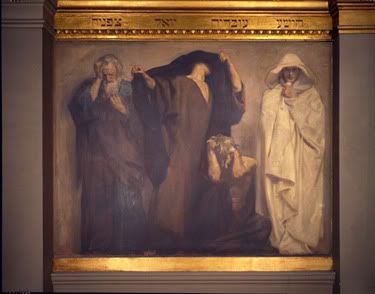
 Question: How does
Question: How does 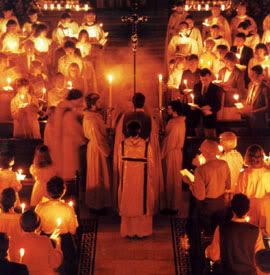 “[I]n Christianity God is not a static thing—not even a person—but a dynamic, pulsating activity, a life, almost a kind of drama. Almost, if you will not think me irreverent, a kind of dance.” (C. S. Lewis, Mere Christianity)
“[I]n Christianity God is not a static thing—not even a person—but a dynamic, pulsating activity, a life, almost a kind of drama. Almost, if you will not think me irreverent, a kind of dance.” (C. S. Lewis, Mere Christianity)![Nativity-Cross by Benedetto Bonfigli [attrib] c. 1445 - http://www.beloit.edu/~classics/main/courses/fyi2000/museum/renaissance/](http://img.photobucket.com/albums/v414/dsjliturgy/Crossandcrech-BenedettoBonfilgliatt.jpg)
 Before you rip your hair out because you've received yet one more phone call asking what time the Midnight Mass is, try out one of these holiday de-stress tools. Enjoy!
Before you rip your hair out because you've received yet one more phone call asking what time the Midnight Mass is, try out one of these holiday de-stress tools. Enjoy! I was recently asked for my opinion on using plays in the liturgy. In particular, the question was about having the children do their Christmas pageant play as the Gospel proclamation at the children's Christmas Eve Mass. Below you'll find an elaboration of my response.
I was recently asked for my opinion on using plays in the liturgy. In particular, the question was about having the children do their Christmas pageant play as the Gospel proclamation at the children's Christmas Eve Mass. Below you'll find an elaboration of my response.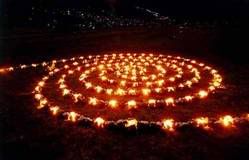

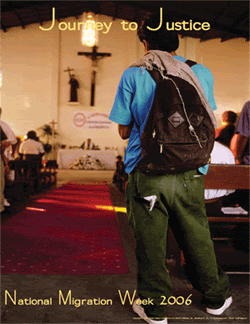
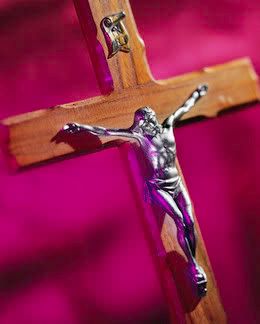 It might surprise you (and I know it will surprise my family!), but I have a tattoo. I got it almost ten years ago. It’s been my private mark reminding me of significant things I want to remember.
It might surprise you (and I know it will surprise my family!), but I have a tattoo. I got it almost ten years ago. It’s been my private mark reminding me of significant things I want to remember.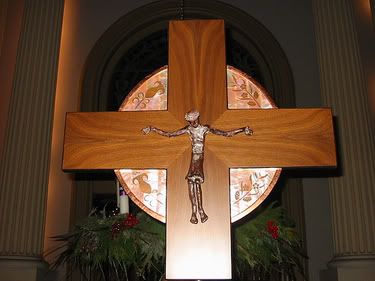
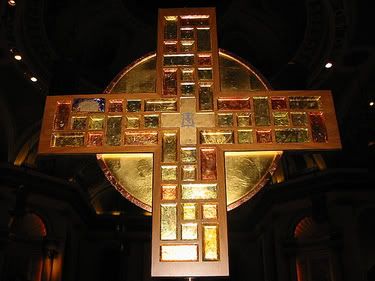
 The Dogma of the Immaculate Conception of Our Lady is only 151 years old. This teaching professes that from the moment of Mary’s conception, she was free from original sin, preparing her to become the Mother of God, the “God-Bearer” or Theotokos. (Don't forget that the Immaculate Conception is about Mary being conceived from the union of her parents, Anna and Joachim.)
The Dogma of the Immaculate Conception of Our Lady is only 151 years old. This teaching professes that from the moment of Mary’s conception, she was free from original sin, preparing her to become the Mother of God, the “God-Bearer” or Theotokos. (Don't forget that the Immaculate Conception is about Mary being conceived from the union of her parents, Anna and Joachim.) In this year commemorating the 40th anniversary of the closing of Vatican II, the Church mourns the loss of one of the great leaders of the liturgical movement in the United States. Msgr. Frederick McManus died on the First Sunday of Advent, the first day of the Year of Grace 2006. He was an excellent scholar who never lost sight of the purpose of scholarship--to bring all God's people into deeper union with Christ through the Christian life of prayer, work, and action.
In this year commemorating the 40th anniversary of the closing of Vatican II, the Church mourns the loss of one of the great leaders of the liturgical movement in the United States. Msgr. Frederick McManus died on the First Sunday of Advent, the first day of the Year of Grace 2006. He was an excellent scholar who never lost sight of the purpose of scholarship--to bring all God's people into deeper union with Christ through the Christian life of prayer, work, and action.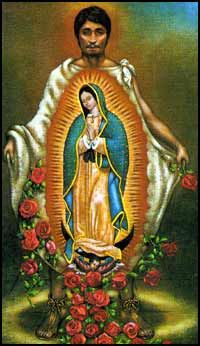 Every year, the diocese celebrates the feast of Our Lady of Guadalupe with processions and evening prayer in Spanish.
Every year, the diocese celebrates the feast of Our Lady of Guadalupe with processions and evening prayer in Spanish. On Saturday, December 10, 9:00a at the Cathedral, the Diocese of San Jose will celebrate an ordination to the priesthood. Singers and instrumentalists are invited to join the music ministry for the celebration.
On Saturday, December 10, 9:00a at the Cathedral, the Diocese of San Jose will celebrate an ordination to the priesthood. Singers and instrumentalists are invited to join the music ministry for the celebration.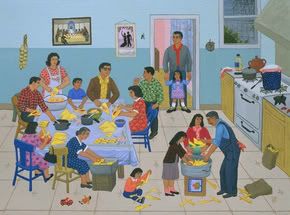
 Down the street from my home, there's a Starbuck's. Now that's not unusual, but what makes this Starbuck's unique is that young people pack the place every night and hang out there until late into the evening. Starbuck's has become the place of community for these young adults.
Down the street from my home, there's a Starbuck's. Now that's not unusual, but what makes this Starbuck's unique is that young people pack the place every night and hang out there until late into the evening. Starbuck's has become the place of community for these young adults.